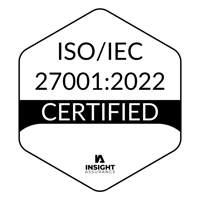Round-Up: Predictions of Business Trends in 2016 and How They’ll Impact Nonprofits


December and January mark the time when round-up lists of every sort hit the stands – predictions for the year to come, best of 2015, and what to watch for in 2016. As such, business publications have put out their projections for 2016’s business trends, which have implications for both for-profits and nonprofits alike. Below is a brief round-up of some of the big topics anticipated in the corporate world this year, and how nonprofits can integrate these ideas into the workplace:
- Across the board, all predictions point to the rise of gig economies. Almost half of the workforce is expected to be independent contractors by 2020, made possible by innovative companies such as Uber, mobile and cloud-based technologies, collaborative business tools, internal social networks (e.g. Slack), and remote workforces that can access the right talent anywhere in the world.
- Nonprofit strategy: For nonprofits who struggle with recruitment, looking for areas or times of year within the organization that could be supported through a short-term contractor or a remote worker could be an answer to the dilemma of staff retention.
- Recruitment will cater to the needs and attitudes of both Millennials and Generation Z, including flexible work approaches and ensuring “meaningful” socially responsible work. In addition, because Generation X workers are a much smaller population than Millennials, the latter is better poised to take over key management positions as Baby Boomers move into retirement. This could mean significant shifts in management approaches, leaning more towards collaborative problem solving versus a top-down environment.
- Nonprofit strategy: This is a good time for nonprofits to look at how their culture could be adapted to support recruitment and retention of these generations, and to begin succession planning to integrate more Millennial leadership.
- Developing intentional work cultures focused on engagement and strengths-based leadership will empower employees to examine how their “natural talents” can play a key role in advancing an organization’s mission. Productivity and engagement will follow, creating a healthier and more effective workforce.
- Nonprofit strategy: Nonprofit managers would do well to sit down with each employee and delve into strength areas, and collaboratively develop a plan for how to use these talents to support the organization. In an ideal world, the traditional “annual review” will be scrapped in lieu of more “real time” feedback from managers and open/ongoing conversations with employees.
- Nontraditional ways to approach professional development will support recruitment and retention. Having a “growth mindset” has become a lifestyle of late, and employees are constantly on the lookout for novel opportunities to learn and grow within their industry.
- Nonprofit strategy: Nonprofits, especially those in rural settings, would do well to think outside the box with remote trainings and on-demand distance-based mentorships as creative solutions.
- Using social media for “social selling” will become more and more important, with original, cutting-edge, and authentic content positioning organizations as thought leaders in specific industries.
- Nonprofit strategy: Social media may feel like a young man’s game, but in reality all nonprofit leaders, regardless of age, should be hooked into LinkedIn, Twitter, and other social networks as a way to support recruitment of younger generations and to raise awareness of the challenges facing the independent sector.
In the coming months we will touch on some of these topics in more detail. In the meantime, for information on boosting recruitment and retention with a healthcare plan that reduces premium costs and improves benefits – with no cost-shifting – please contact us.
To learn more about partial self-insurance, a solution to rising healthcare
costs as well as talent recruitment and retention, download the
Nonprofit Executive's Guide to Partial Self-Insurance
Links to specific 2016 trend round-ups:
- http://www.fastcompany.com/3053911/hit-the-ground-running/five-business-trends-to-watch-in-2016-no-matter-how-or-where-you-work
- http://www.entrepreneur.com/article/254370
- http://www.huffingtonpost.com/steve-strauss/top-5-small-business-tren_b_8942848.html
- http://www.forbes.com/sites/ajagrawal/2016/01/11/8-tech-trends-changing-how-we-work-in-2016/2/#2715e4857a0b7a028e192d3a
- http://www.forbes.com/sites/ianaltman/2015/12/01/top-10-business-trends-that-will-drive-success-in-2016/#2715e4857a0b5f5424ec5571
- http://www.forbes.com/sites/victorlipman/2016/01/01/key-management-trends-for-2016-here-are-6-research-based-predictions/#2715e4857a0b29d566951071
- http://fortune.com/2015/12/15/key-business-trends-2016/
- http://www.nonprofithr.com/5-talent-and-culture-trends-your-nonprofit-needs-to-be-ready-for-in-2016/
The information and materials herein are provided for general information purposes only and are not intended to constitute legal or other advice or opinions on any specific matters and are not intended to replace the advice of a qualified attorney, plan provider or other professional advisor. This information has been taken from sources believed to be reliable, but there is no guarantee as to its accuracy. This communication does not constitute a legal opinion and should not be relied upon for any purpose other than its intended educational purpose.
.png?width=1501&name=Nonstop_Logo-22-Horizontal%20(2).png)



